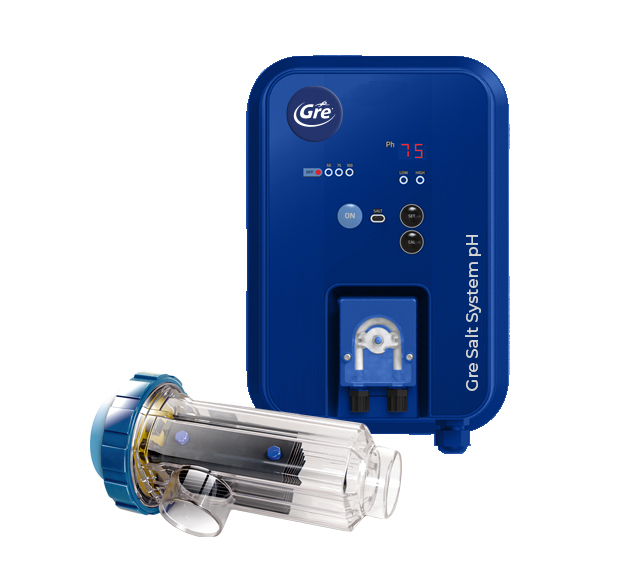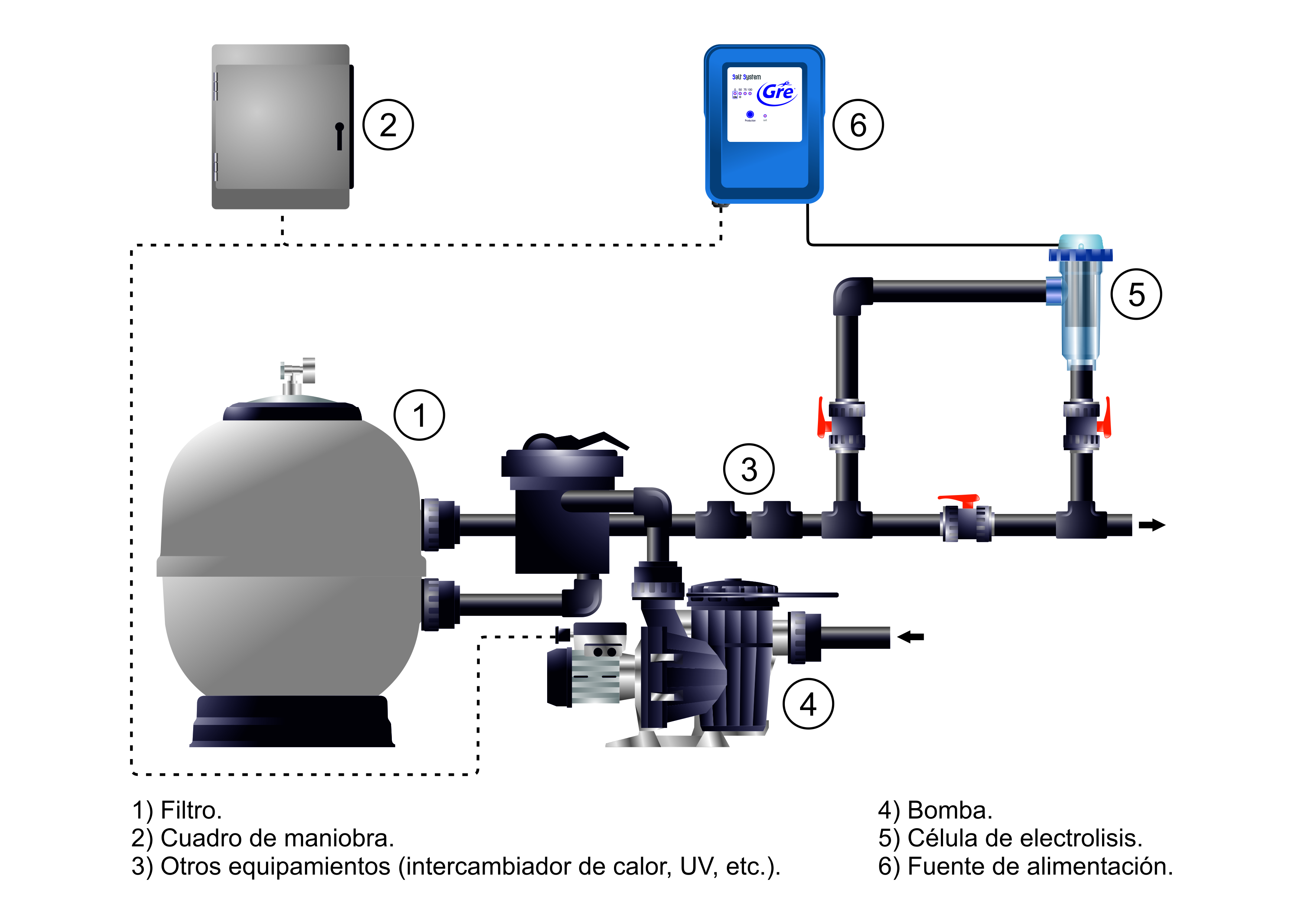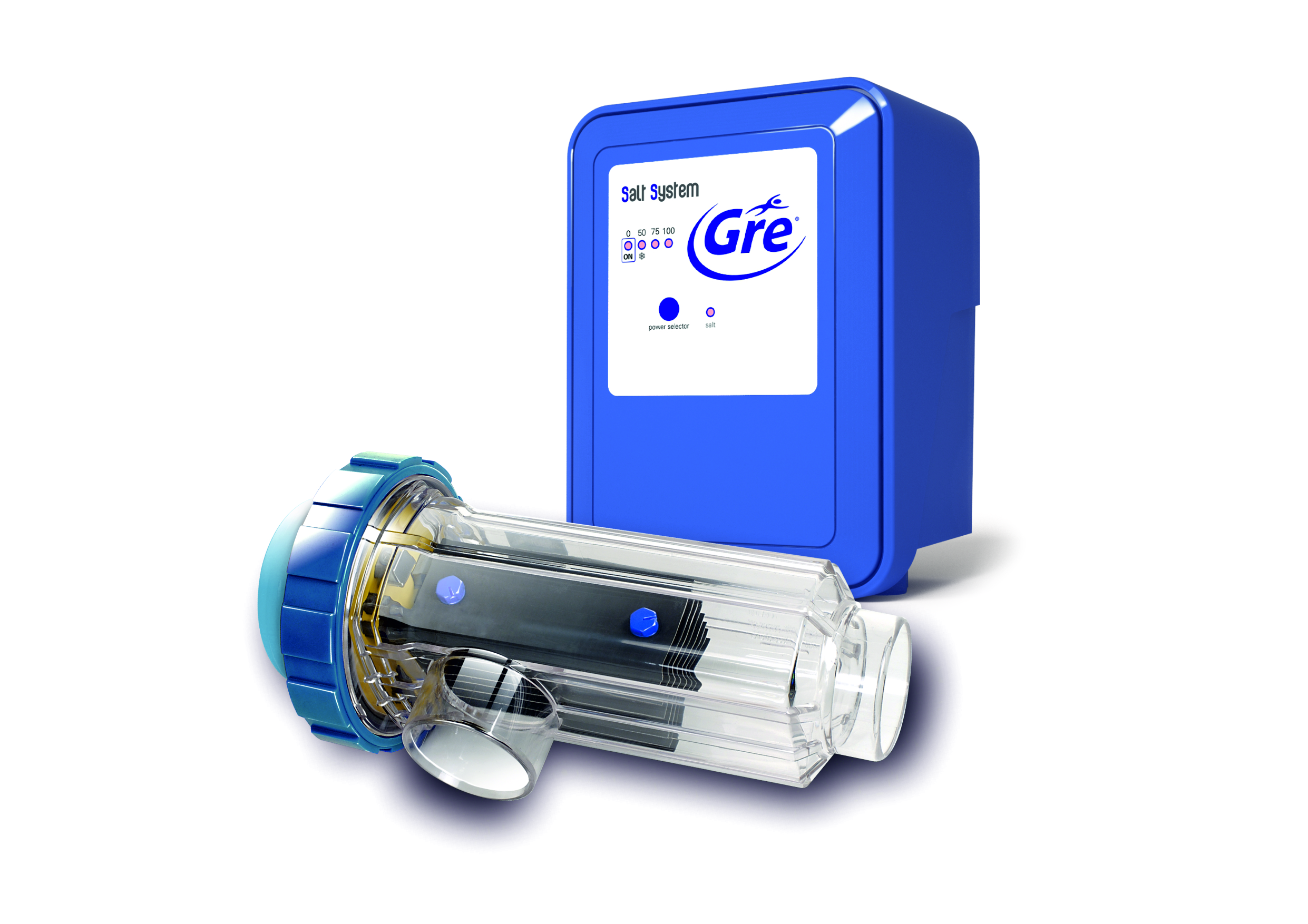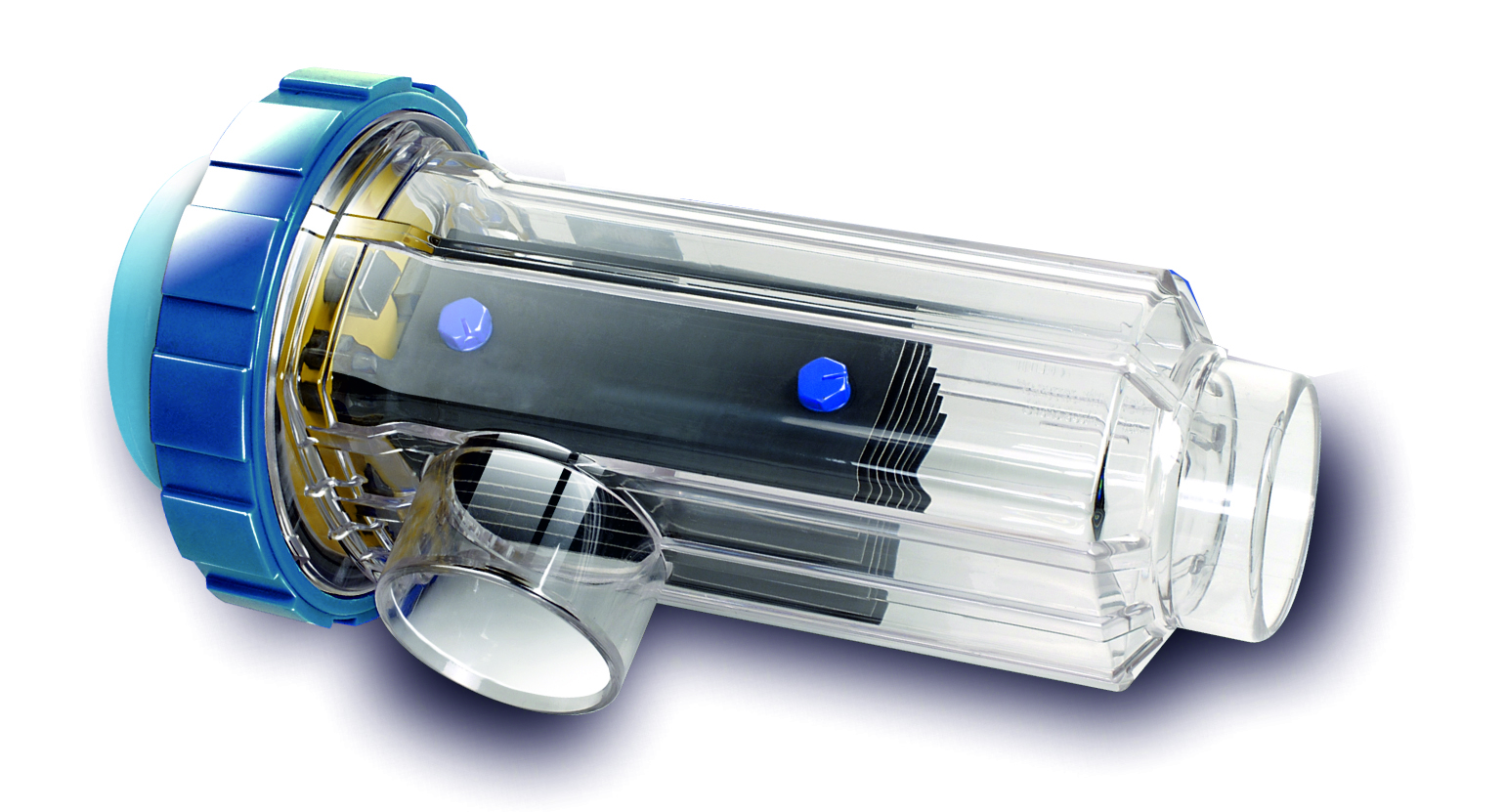Summertime is approaching and, with it, the long-awaited good weather. That is why now is the perfect time to get our pool set up, which will be the undisputed queen during the hot summer days. We tell you everything you need to know about salt chlorine generator for swimming pools.
One of the most important aspects of pool treatment is cleaning and maintenance. The aim: to enjoy a refreshing swim in crystal-clear water that is safe for our health. But how do we achieve this? Read on to find out more.
What are salt chlorine generator?
A few weeks ago, we talked to you about salt electrolysis on our blog and its many benefits. This advanced and modern pool disinfection system minimizes the use of chemicals, it is also cheaper and needs less attention (it allows greater automation as you do not need to take a daily measurement of chlorine levels).
In this scenario, it is necessary to have a salt chlorine generator, a revolutionary product that we offer you at GRE and that enables the electrolysis process, producing chlorine from common salt.
Advantages of salt chlorine generator for your pool
- They ensure a pool with no odours or eye irritation when swimming. They also prevent swimwear from wearing and discolouration.
- They automatically produce and dose chlorine.
- They avoid the storage and handling of chemicals.
- They are safe, since they only use common salt.
- They are easy to install and require no maintenance.
- Suitable for both above and below ground pools. Models available for different capacities (from 55 m³ to 110 m³).
How to install the electrolysis system for pools
Below, we show you step by step how to install a salt chlorine generator in your pool. Specifically, we will talk about the Gensalt OE chlorinator.
- First of all, we must read the manual and know what parts are included in the salt chlorination kit. In this case:
- Electric panel.
- Chlorine production cell.
- Adapter for different sized pipes.
- Drill bit for drilling more pipes.
2. Ideally, a PH regulator should be installed in combination with this kit.
- Before we begin, we must locate the pool return pipe (always after the filter).
- In this pipe, from the filter to the nozzles, the first component that should be installed is a PH reading probe.
- The second component to be installed is the salt chlorinator production cell (it can be horizontal, vertical and even at an angle up to 45º, but never downward).
- Finally, it is recommended to install a PH corrector liquid injector.
- For the installation you will need: pencil, drill, cutter, 13 mm wrench and screwdriver.
For further details, you can view this video from our Youtube channel, where we explain the installation with a real case. Find everything you need for water treatment and pool maintenance at GRE.




Para generar 300 gramos de cloro en una hora, que intensidad de Amperios deben circular en esa hora?
La cantidad de corriente continua que se mide con un Amperinetro de corriente continua, en los cables de alimentación de las células generadoras, es la misma magnitud de corriente que circula por la solución salina, a razón de 1 Amperio/. hora para generar 1,3 gramos de Cloro en esa hora??
Buenos días César,
¿Qué modelo de clorinador salino de Gre tiene? Le podemos mandar el manual de instrucciones para que compruebe estos datos técnicos. Saludos
Buenos días servicio técnico para dirigirnos? somos de Barcelona
Hola,
podrás encontrarlo en el siguiente link https://www.grepool.com/buscador-de-servicio-de-atencion-tecnica%20%20aqui%20puede%20encontrar%20tu%20servicio%20técnico%20mas%20cercano
Muchas gracias.